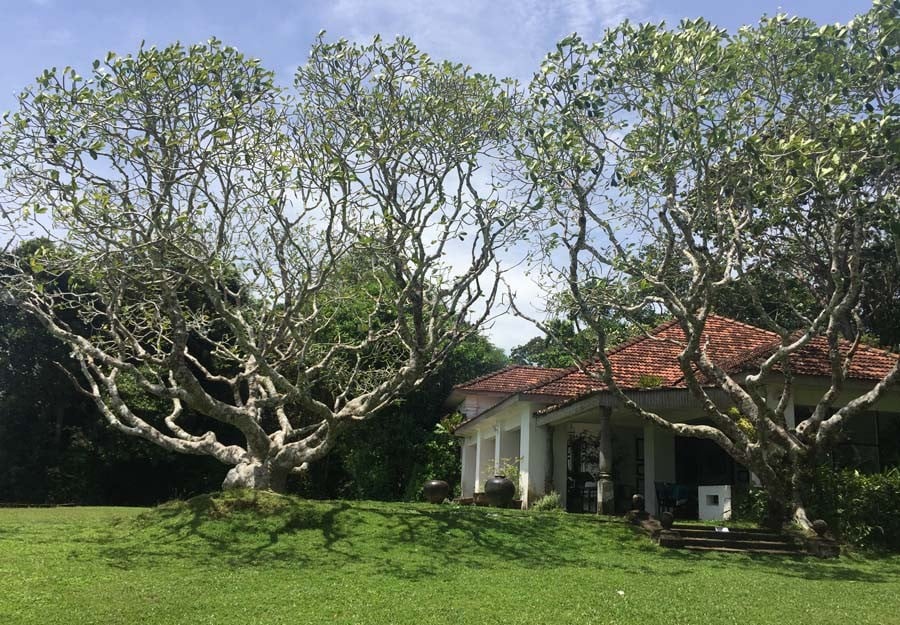
Sri Lanka is a country of amazing contrasts; within a day you can go from verdant green hills thick with fog and rain to sunny beaches and sculpted gardens

In summer, reserved seats to popular destinations get sold out months in advance. You can still get tickets on the day, but Sri Lankan Railways does not guarantee sitting or even standing room. Just buy them and try out your luck! So we did at 4:30am on the first train leaving for Ella, in hopes that the earliness of the hour would deter some less single-minded travellers. At 4am our tuk-tuk weaved its way through promisingly empty Colombo streets, deserted except for the occasional fruit truck being loaded in the night and a stray dog or two forlornly meandering the side lanes. But we had forgotten that train stations have a life of their own. On the platform hundreds of people had already gathered in a state of heightened readiness, their luggage clutched to their chests, waiting to launch themselves into the train even before it came to a complete halt. In this scramble I managed to lodge myself in the corner of a carriage as a steady stream of commuters kept pouring in till the train was left with no breathing room. Standing room had long been saturated. Couples embraced each other not out of love but lack of space. Strangers tried in vain to keep their limbs and hips apart. In this state of general disorder I stood rooted for three long hours, my legs threatening to cave under me. Nothing in my extensive pre-trip Googling had prepared me for this. The silver lining? No groping, even as bodies remained packed against each other for hours. The purpose of this arduous train ride was clearly to restore my faith in a crowd of South Asian men.
At Kandy the rush slowly started to dissipate and the famed beauty of the Sri Lankan landscape began to reveal itself. Having found a seat by this time I was free to admire the verdant hills and the manicured tea gardens intermittently obscured behind thick fog and rain that only added a further layer of romance. The ride from Kandy to Ella is said to be one of the most beautiful train trips in the world, often featured in world’s best lists, and I’m glad to report the hype did not diminish the experience.
The complete journey from Colombo to Ella took 10 hours, a grueling trek that ended at a guesthouse called Mount Relax Cottage, not to be judged by its name. Set on the edge of a hill among tall pine trees, the elevated cottages of this hotel are as close as adults can get to sleeping in a tree house. Its front and side walls are floor to ceiling windows that give the sense of floating above a forest. The best part is it is reasonably priced, around 5000 Pakistani rupees a night.
Ella is a lovely mountainous resort with mild weather and no humidity, a welcome change from Colombo. It is so overrun by white tourists that the only Sri Lankans you will find are shop owners or assorted employees of the hospitality industry. The food is great, the air is clean, the atmosphere cheery and life just a wee bit more relaxed there, at least to the weary traveller’s eye. I met a Puerto Rican woman over dinner that night who was travelling the country alone, surfing various Lankan beaches, enjoying the crisp mountain air and just generally feeling free. This is something a woman can do in Sri Lanka without much fear, and many do.
From the south-east of Sri Lanka, we travelled south-west to the beach town of Bentota, a small hamlet with very little activity. Even its bazaar is so small you have to walk to the next town to find any bustle or variety. But its tranquility is perfect for those attempting to get away from it all. Our hotel here was Paradise Road The Villa, a building first constructed by celebrated Sri Lankan architect Geoffrey Bawa (1919-2003), whose work is central to the Sri Lankan architectural imagination. Bawa looms so large on the country’s cultural horizon you can find dozens of coffee-table books in Sri Lankan bookstores and resorts exploring his art through glossy, high-definition photography. Bentota is also where Bawa’s own home is located: Lunuganga (Salt River), a sprawling estate spread on 15 acres of land that Bawa bought in 1949 and turned into a tropical version of a European renaissance garden. Since his death it has been turned into a tourist attraction. The guide who showed us the place was clearly in awe of Bawa’s stature and the majesty of the estate justifies this reverence. One story that particularly stood out for me was of Bawa buying off the island that overlooks his estate so that nobody else would be able to build there and ruin his view. Lunuganga is a moving place, a sprawling labour of love by a rich man who spent forty years tending lovingly to nature, often letting it run free and at other times sculpting it into magical shapes, playing Bonsai with life-size trees instead of the small, decorative ones the Japanese prefer.